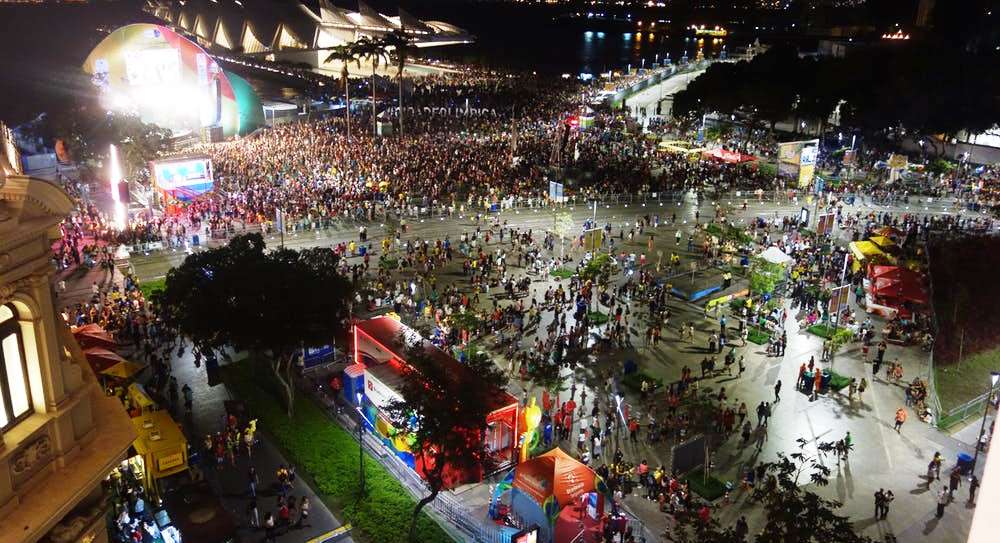The media coverage (including here in REVITALIZATION) regarding Rio de Janeiro’s post-Olympics legacy has been almost uniformly negative. For good reason. But, when dealings with complex livings systems like cities, few situations are purely positive or negative.
So, I (Storm) am happy to report some good news on that front.
Just as Barcelona, Spain rediscovered its port during the 1992 Olympics, Rio has reconnected with the long-derelict Porto Maravilhas. The Porto borders downtown Centro, an area which bustles with office workers from all across the city during the week.
But up until recently, Centro lacked public meeting spaces, and was considered an unsafe, no-go area in the evenings and on weekends.
This has changed dramatically as a result of the Olympic Games, and the subsequent Paralympics Games. Porto Maravilhas has been rebranded as the Boulevard Olimpico – and suddenly, it’s the place to be.
A dedicated Olympic “live site”, where fans watched the action on big screens, the Boulevard Olimpico owes its success to the ingenious combination of a diverse cultural offering (including the new Museum of Tomorrow and the revamped Museum of Art in Rio) with business displays and entertainment.
In an email, London, England-based Urban Planning and Design Consultant Ömer Çavuşoğlu brought Parque Madureira to my attention in this manner: “I would like to highlight Parque Madureira in Rio de Janeiro. As with everything to do with Rio, especially around the time of the 2016 Olympics, it’s had its admirers and critics, but for me, the success of the project was made clear with a very simple and personal connection: I was in charge of coordinating and running the floor for the Urban Age 2013 Conference as Rio was gearing up for the 2014 World Cup and the 2016 Olympics, we were investigating major investments (mainly in transport and regeneration) and whether they related to / tried to alleviate some of the chronic problems facing the city.”
“We wanted to highlight Parque Madureira as one that gifted the city with a public asset in a once redundant / obsolete part of the city. The architects in charge of the project presented the project at the conference. While prepping for the actual conference, testing A/V and lighting, we’ve run each presentation to the desired setup and presentation sequence. One of the technicians in charge for the technical desk first erupted to shouts, laughter and excitement which were then slowly left to a mix of emotions and tears. He later told me he grew up in the area of regeneration, and was now using the park, and very proud of it being showcased as a prime example of regeneration at the Conference.”
“This, for us, was a testimony of a story of success and one that probably merits a narrative and a reminder at a time when there’s little appetite or faith left in mass regeneration.”
Photo of Parque Madureira by Beatriz Garcia.
See the August 22, 2016 article by Beatriz Garcia in The Conversation.

